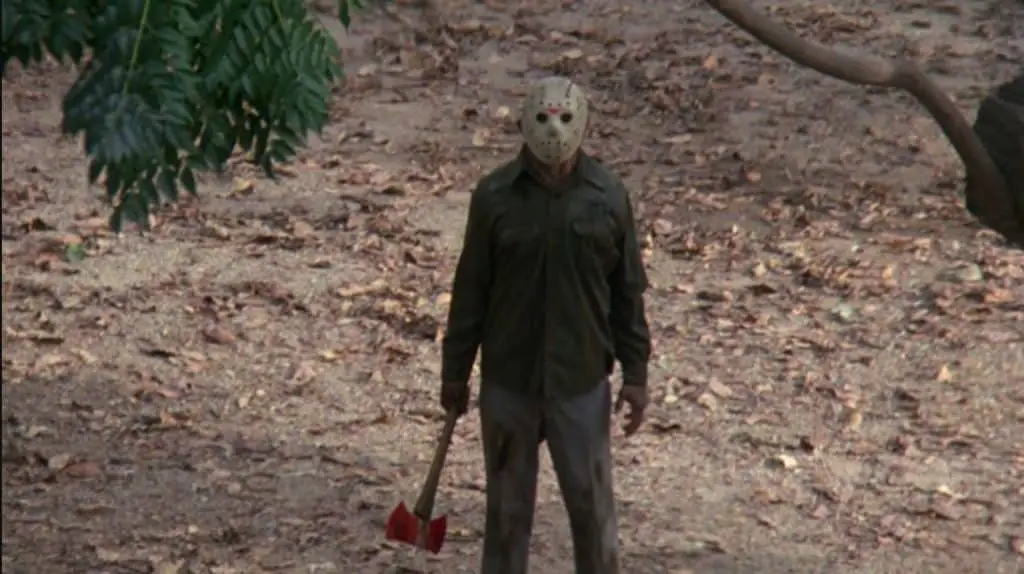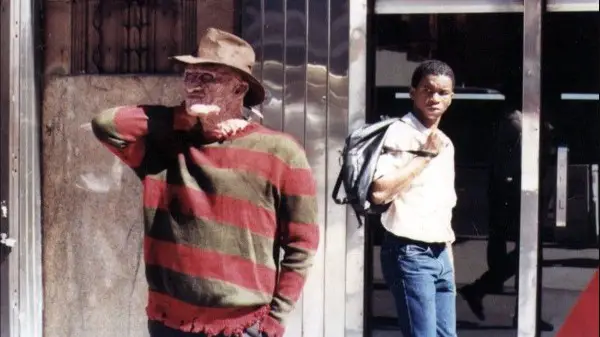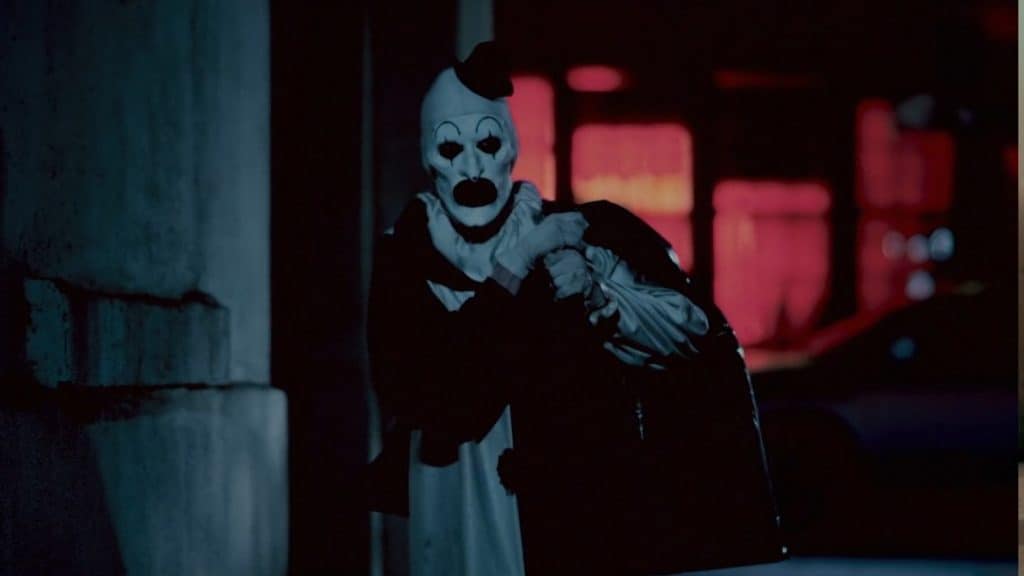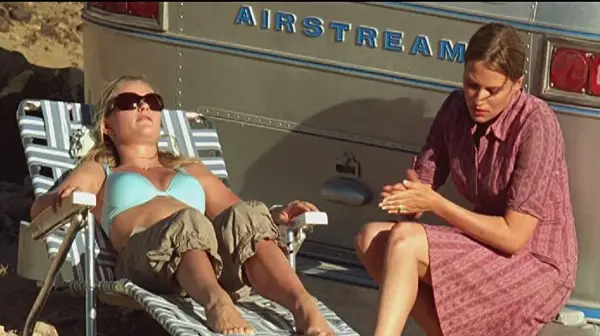
The Infamous Slashers
A handful of well-known names spring to mind when slasher horror films come up in conversation. It’s knives out!
There’s fan-favorite Michael Meyers. The asylum-escapee ruins Halloween (1978) for the town of Haddonfield. Jason Voorhees, the boy everybody loved to tease. Chasing unlucky sexed-up camp counselors with a machete. Remember that one Friday the 13th (1980) at Camp Crystal Lake?
Who can forget Freddy? The dude in the red-and-green striped Christmas sweater. With a burned face and that homemade knife-glove. Who kept giving those kids Nightmare on Elm Street (1984)! And what about sweet, darling Chucky? The possessed foul-mouthed Good Guy doll that tried to convince a little boy, he wasn’t a criminal. That it was all just Child’s Play (1988).
Candyman (1992) can be conjured after speaking his name five times, in a mirror. He is one of horror film’s most iconic characters. Helen, a graduate student learns of a racially charged murder at the Cabrini Green projects, in Chicago.
While writing her thesis she discovers the urban legend of a vengeful murderer named Candyman. Soon, the project’s residents talk of a man named Daniel Robitaille. Responsible for 25 murders Robitaille returns as Candyman when “summoned” to exact revenge on the summoner.

Slasher – The Favorite Horror Genre
Horror, reality, and social commentary are oftentimes synonymous. Slasher horror films expose us to oppressed characters and elaborate on our societal fears.
Today, slasher horror remains one of the most favorite horror genres. And while we identify with such memorable slashers, what is it about the slasher horror genre that piques so much audience interest?
Is it the pretty, sexy girl? The running gaggle of terrified jocks and babes? The endless body count? The creepy backwoods settings and nightmarish shower/boiler room/dark closet sequences? Certainly, it’s the gratuitous special effects! Actually, it’s all those things but mostly it’s the truth.
The Truth of Slasher Horror
There is one main reason slasher horror reigns supreme over every horror genre. It’s almost like true crime. Think about society’s relationship to Dahmer, Gacy, Bundy, Wuornos, even Jack the Ripper. These real-life villains strike a deep chord in the collective American ethos.
During the OJ Simpson and Menendez brothers trials, despite all the witnesses and crazy alibis, it was the gloves and the shotguns, the trails of blood, the unforgiving photographs of the victims, and the relentless media savagery. The story of historical courtroom slasher horror kept viewers glued to the televisions.
The delivery of slasher horror films tends to lean heavier on sexualizing women and the male gaze, but at its heart “slasher movies are idea-oriented. And almost all horror films force you to look within and ask yourself: what’s the line between you watching a horrific act… and finally looking away?”
Characters that portray powerfully captivating human beings; not ghosts, or apparitions, make slasher horror stories identifiable, and somehow remind us that nobody is really safe in this world from the hands of a psychotic serial killer. Even if the film works with little to no substance, the reality of the kills can still pack a terrifyingly realistic punch!

Slasher Horror – The Classics
What is it about the classic slasher horror; the films and killers that actually gave the genre its realistic integrity? The films from the 70s and 80s infused with indestructible forces, hellbent on revenge. Just regular people, like you and me. Or clowns. There were plenty of horror clowns in the 80s. Creepy, absurd, and silly clowns. Then, clowns seem to disappear. Until the insipidly murderous clown in Terrifier (2016) showed up and let audiences know just how terrifying slasher clown horror can be.
One of the most underrated slasher horror themes is “don’t go into the woods.” Inspired by films like Deliverance, and The Hills Have Eyes (1977) this cat-and-mouse storyline would heavily influence films like The Blair Witch Project (1999), It Comes at Night (2017), Evil Dead (1981), Sleepaway Camp (1983), Wrong Turn (2003), House of Wax (2005) and Cabin in the Woods (2012). But while most slasher films are dialogue and scream heavy, the fear can be all the scarier when portrayed in the antagonist’s silence.
The Unseen Slashers
Slasher horror creates even more tension when the killer is silent and never revealed.
The unknown Cane Killer terrorizes a certain sexy kinda college gal, that would kill, not literally, to get into the Pi Theta Sorority in The House on Sorority Row (1982). But then they do kill, literally, or maybe it was a prank. And there is a witness, but who?
Considered more of a mean-girl-jiggle-fest social commentary than a horror movie, this glossy, sharp-edged film is worth watching and has been voted one of the best slasher films. Upon its release, many moviegoers found themselves cat-calling at the absurdity of the actresses on screen “walking” straight into their grisly murders.
In the same vein, Black Christmas (1974) found The Caller terrorizing a group sorority of girls during the most wonderful time of the year. Again, the killer is never revealed, although, there are plenty of times to guess who is responsible throughout the film.
And the special effects and jump scares upstage the Phi Theta killings. Ironically, director Bob Clark would go on to make the polar opposite of fear and create the amazing holiday classic A Christmas Story!

The Master of Slasher Horror
No director has come close to mastering horror flicks than Wes Craven. He owns the patented formula for Slasher thrills and jump scares. Craven is memorable for his early films. Three of which inspired remakes. The People Under the Stairs (1991), The Last House on the Left (2009), and The Hills Have Eyes (2006). But the evil Freddy Krueger and Craven’s Nightmare on Elm Street (1984) took his special take for slasher horror and put it on the map.
Craven’s mastercraft of slasher horror stories would match the brilliance of Alfred Hitchcock. The pinnacle of his macabre storytelling would arrive in the form of the character Ghostface.
No slasher film compares to the game-changing film Scream (1996). Forever reinventing how Slasher horror would be imagined. The film left people hoping they would never, ever be caught home alone, answer the phone, and be asked, “What’s your favorite scary movie?”